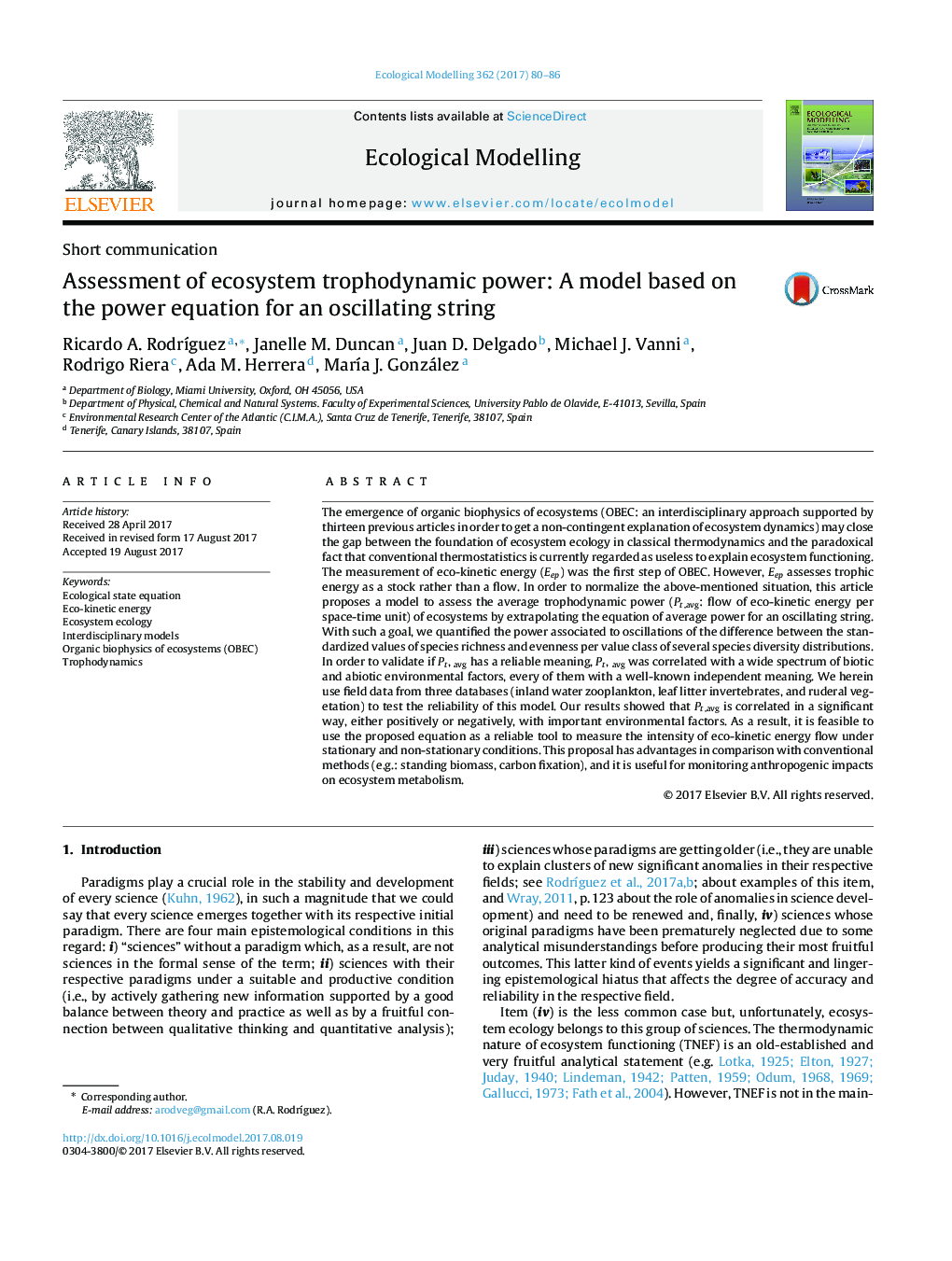| کد مقاله | کد نشریه | سال انتشار | مقاله انگلیسی | نسخه تمام متن |
|---|---|---|---|---|
| 5742035 | 1617385 | 2017 | 7 صفحه PDF | دانلود رایگان |

- Paradoxically, thermodynamic approach is not in the mainstream of ecosystem ecology.
- Wave-like models based on organic biophysics of ecosystems could reverse this trend.
- The oscillating string power equation (OSPE) has parameters valid for any kind of wave.
- OSPE is used to assess trophodynamic power in correlation with environmental factors.
- Usefulness of this proposal in the field of ecological monitoring and impact studies.
The emergence of organic biophysics of ecosystems (OBEC: an interdisciplinary approach supported by thirteen previous articles in order to get a non-contingent explanation of ecosystem dynamics) may close the gap between the foundation of ecosystem ecology in classical thermodynamics and the paradoxical fact that conventional thermostatistics is currently regarded as useless to explain ecosystem functioning. The measurement of eco-kinetic energy (Eep) was the first step of OBEC. However, Eep assesses trophic energy as a stock rather than a flow. In order to normalize the above-mentioned situation, this article proposes a model to assess the average trophodynamic power (Pt,avg: flow of eco-kinetic energy per space-time unit) of ecosystems by extrapolating the equation of average power for an oscillating string. With such a goal, we quantified the power associated to oscillations of the difference between the standardized values of species richness and evenness per value class of several species diversity distributions. In order to validate if Pt, avg has a reliable meaning, Pt, avg was correlated with a wide spectrum of biotic and abiotic environmental factors, every of them with a well-known independent meaning. We herein use field data from three databases (inland water zooplankton, leaf litter invertebrates, and ruderal vegetation) to test the reliability of this model. Our results showed that Pt,avg is correlated in a significant way, either positively or negatively, with important environmental factors. As a result, it is feasible to use the proposed equation as a reliable tool to measure the intensity of eco-kinetic energy flow under stationary and non-stationary conditions. This proposal has advantages in comparison with conventional methods (e.g.: standing biomass, carbon fixation), and it is useful for monitoring anthropogenic impacts on ecosystem metabolism.
Journal: Ecological Modelling - Volume 362, 24 October 2017, Pages 80-86